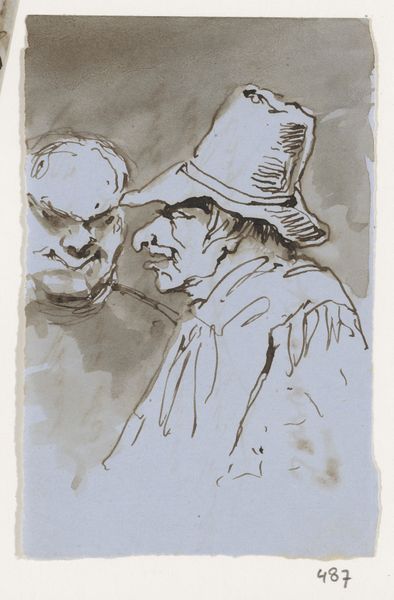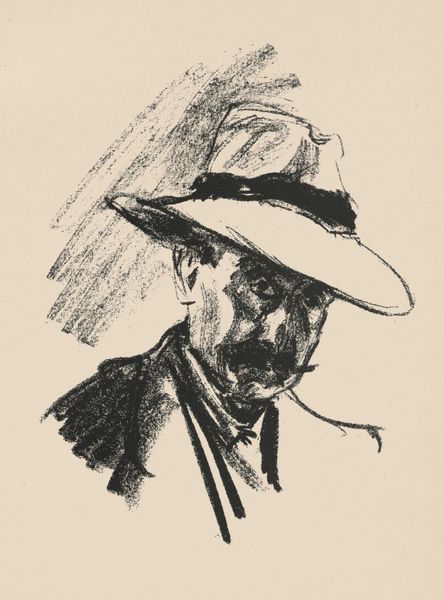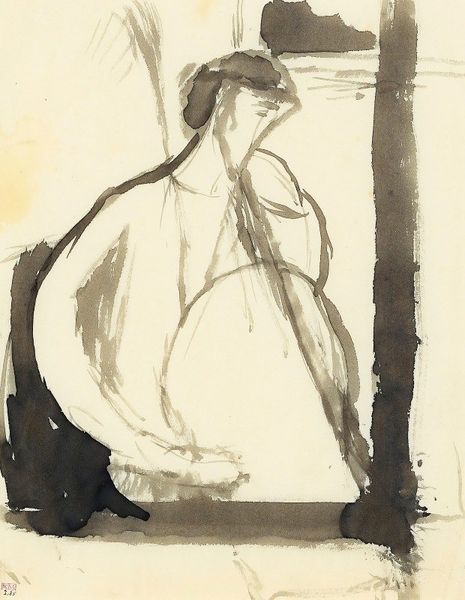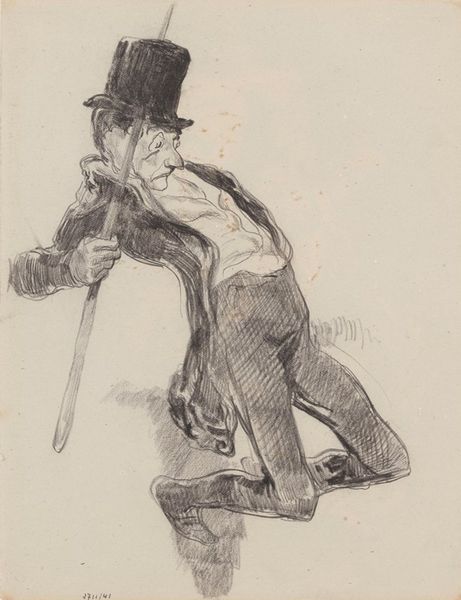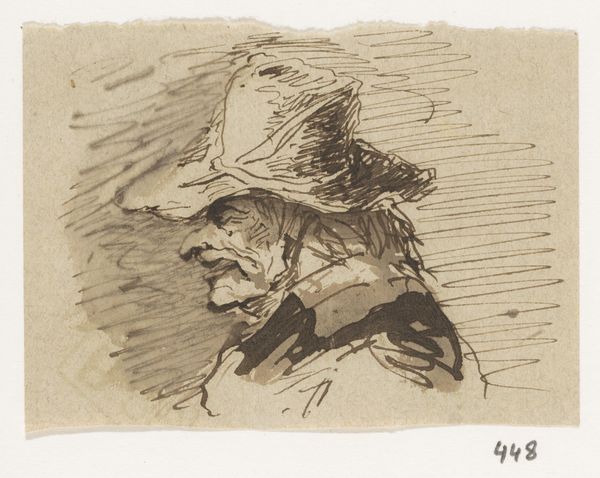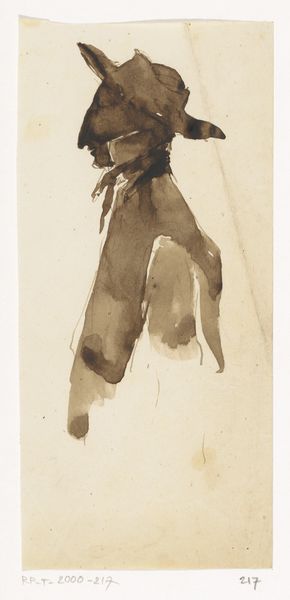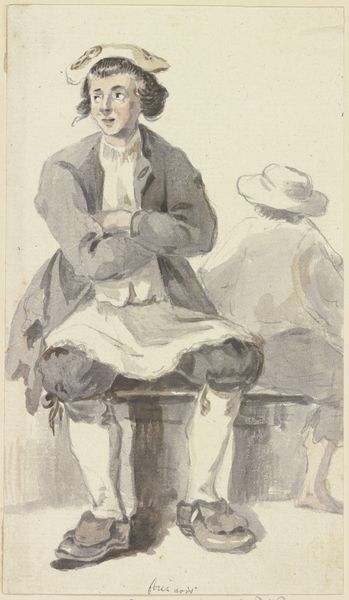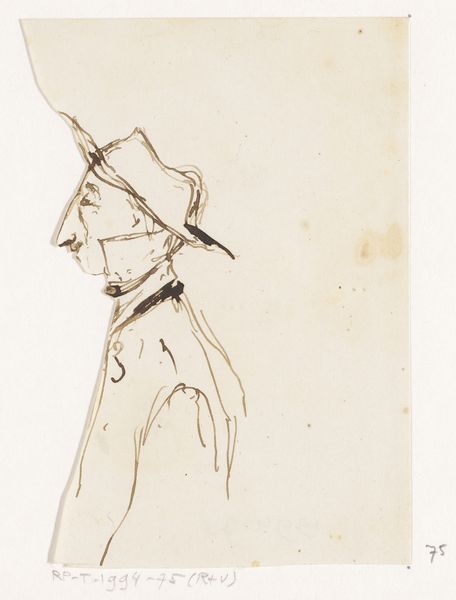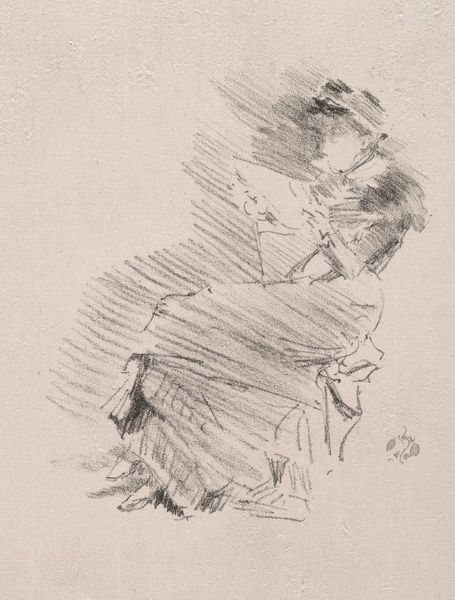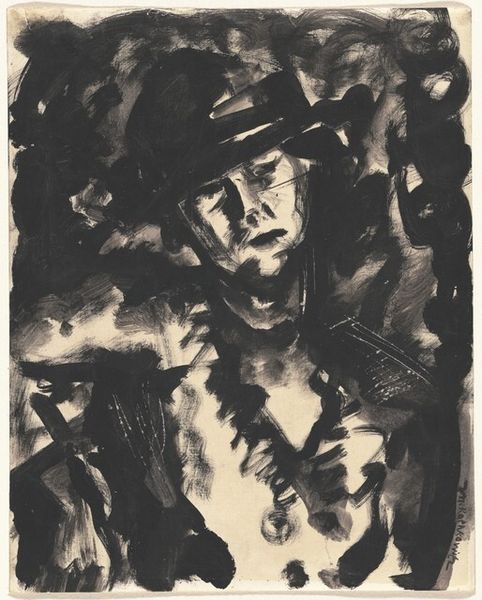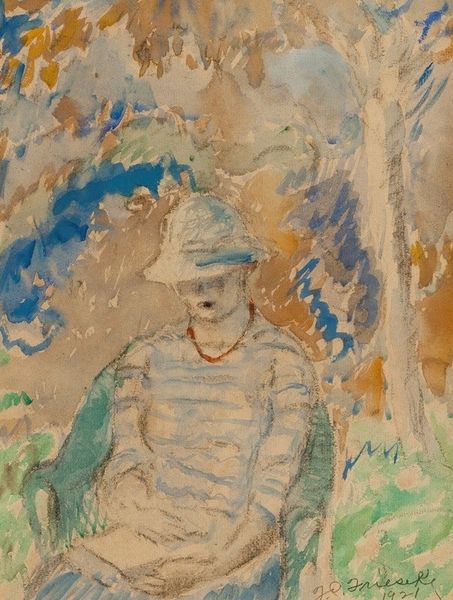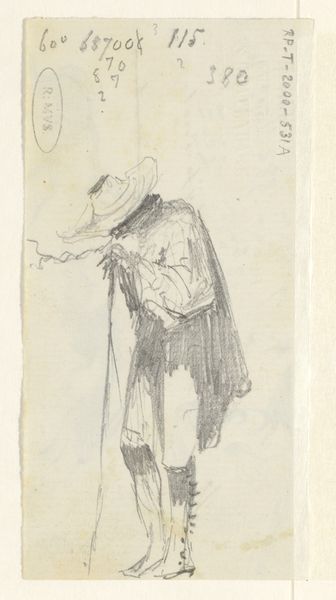
painting, watercolor
#
portrait
#
figurative
#
painting
#
figuration
#
oil painting
#
watercolor
#
romanticism
#
watercolour illustration
#
watercolor
Copyright: Public Domain: Artvee
Curator: The way the artist handles the medium creates an ethereal effect—the figure seems almost to emerge from a mist. There's a contemplative and regal quality, despite the fluidity. Editor: Precisely! The loose washes of color beautifully evoke both Romanticism and a certain mystique. We’re looking at John Singer Sargent’s “King of the Gypsies,” rendered in watercolor. Although, some suggest it might be a work of pastiche—an aestheticizing interpretation of the subject rather than a depiction of lived experience. Curator: I see what you mean. The details Sargent chooses—the elaborately embellished hat, the string of what appears to be pearls draped at the subject’s knee—are all laden with symbolic potential. Do these objects denote status, history, or perhaps even longing? What do these external elements communicate to the internal life and identity of the sitter? Editor: Contextually, Sargent was producing these works during a period of great social fascination—and often misrepresentation—of Romani communities. These portrayals participated in a larger social script in which exoticization served to emphasize an idea of inherent cultural “otherness.” It becomes complicated. Curator: The “King” as a figure is so evocative, however. Sargent has captured the essence of dignity despite circumstances, using the symbols to build this emotional narrative. Is the viewer invited to empathize or merely observe an "exotic" spectacle? Editor: That tension, I believe, is where the painting derives its power and its ambiguity. It challenges us to examine our assumptions, our visual habits of viewing certain individuals within very complex socio-political conditions. Sargent had great success but the gaze towards other subjects can still be read as appropriation. Curator: The weight of social history meets personal storytelling. As a portrait, it reveals just as much about Sargent's world as it does about the subject before him, don’t you think? Editor: Absolutely. A telling example of art as a cultural artifact, where technique and representation converge in dialogue with power structures. It provides the viewer with many interpretive entry points into Sargent's practice and its relevance to us now.
Comments
No comments
Be the first to comment and join the conversation on the ultimate creative platform.

